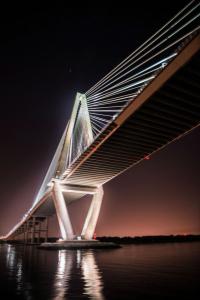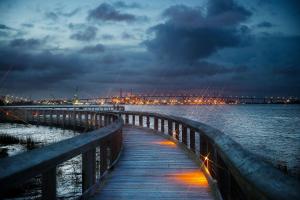 We love living here in Charleston, partly because the history of the city is so fascinating. For example, did you know that Charleston has survived the Revolutionary War, the War of 1812, and the Civil War as well as pirates and hurricanes? All three wars had battles that took place in or near Charleston, and the city has survived to tell the tale.
We love living here in Charleston, partly because the history of the city is so fascinating. For example, did you know that Charleston has survived the Revolutionary War, the War of 1812, and the Civil War as well as pirates and hurricanes? All three wars had battles that took place in or near Charleston, and the city has survived to tell the tale.
Read on for more fascinating, unusual, and fun facts about Charleston and South Carolina.
The Isle of Palms is thought to be at least 25,000 years old and first inhabited by the Seewee Indians.
- Four men from Charleston signed the Declaration of Independence: Thomas Heyward Jr., Thomas Lynch Jr., Arthur Middleton, and Edward Rutledge.
- Charleston is known as “The Holy City” because of the number of churches.
- South Carolina was the eighth state to join and the first state to secede from the U.S. It had to print its own stamps and money because it couldn’t participate in the federal postal system.
- In 1736, the Dock Street Theater was America’s first. In 1773, the Charleston Museum, America’s first, opened.
- The first golf game in the U.S. took place in Charleston.
- The city’s baseball team, the Charleston Riverdogs, is partly owned by actor Bill Murray.
- The Arthur J. Ravenel Jr. Bridge is North America’s longest cable bridge and connects Charleston with Mount Pleasant.
- Charleston, which became a city in 1783, is about halfway between Washington, D.C. and Miami, Florida.
- Citadel Cadets on Morris Island fired the first shot of the Civil War.
- Some buildings in downtown Charleston have metal circles about the size of a plate on the exterior. They are the ends of earthquake rods, which were added to buildings after the Charleston earthquake of 1886.
- South Carolina has two state mottoes: ‘Dum Spiro Spero’ (‘While I breathe I hope’) and ‘Animis Opibusque Parati (‘Ready in Soul and Resource’).
- The Port of Charleston is the largest on the southeast Atlantic coast. Close to 10 million tons of cargo go through the port every year.
- The first significant victory in the American Revolution was the Battle of Fort Sullivan.
- Charleston’s first female newspaper publisher and editor was Elizabeth Timothy.
- Sweetgrass basket making has taken place in the Mount Pleasant community for more than 300 years.
- Historic Charleston homes and buildings have decks that face south or west to ensure a breeze in the summer, as air conditioning didn’t exist then.
- On Nov. 2, 1954, Strom Thurmond became the first U.S. senator elected by write-in vote. Thurmond received 139,106 votes to Edgar Brown’s 80,956 votes.
- When slaves were sold at the Old Exchange Building, they had to wear tags with their assigned number and skills.
Do you have a little-known fact about Charleston to share below?







